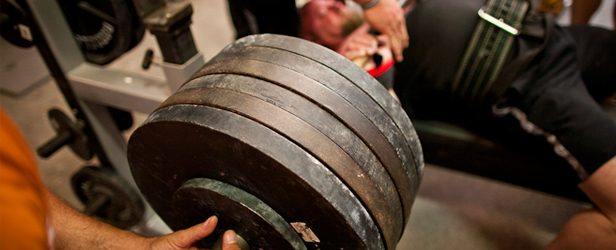
One of the first things we learn in the fitness industry—whether you’re a trainer, a gym rat, or that “newbie” who is still wet behind the ears—is that more isn’t always better.
After all, if doing a good 3 X 5 program will increase your bench press, then doing 6 X 5 should double it, right? Not necessarily. Well, what about 10 X 5? That might be a good GVT or ESD program but don’t look for it to (necessarily) increase your strength. And there is never any call to do say 25 sets of 5. That’s just stupid.
However, as much as fitness professionals and trainers want to tell you that “more isn’t always better,” sometimes they’re just plain wrong. Sometimes what you need is more. Sometimes what you need is more volume.
This is especially true if you’re trying to build up work capacity. Now, a powerlifter might not need the work capacity that a professional Strongman might. So if your game is Strongman, then you had better be sure to have some work capacity built up. And it isn’t going to happen with just 3 X 5. The 3 X 5 can get you strong as hell, but unless you’re doing some sort of RE work, general conditioning, body weight circuits, or something else similar, good luck—at any kind of resistance—once you get up around eight or more reps. Watch and see how quick your endurance fades.
It fades simply out of plain neglect. You can be in shape for something you don’t do. And regardless of what kind of effects increasing your 1RM can have on strength endurance, if you don’t have any kind of tolerance built up for repetitious work (whatever kind it is), watch and see how quick you peter out.
Hell, look at Joe DeFranco’s now semi-famous (infamous?) “Westside for Skinny Bastards” (WS4SB) programs. Most of the assistance work in those programs (which to tell the truth makes up the bulk of the programs outside of the ME/RE/DE work) is of the medium to high rep (8–12) variety.
(Of course, this is a generality. I’m not trying to make any sort of blanket statement about Joe’s training or programs. I’m just making statements based off his WS4SB articles and some of his training log posts here at EliteFTS. Specific programs that Joe or his staff design may vary.)
Why? Because this is a rep range that allows a trainee to build size (one of the original tenets of the program), build strength (which many other physical attributes are based on) in auxiliary muscle groups, and build work capacity (which is a major requirement of any competitive athlete).
What is one of the reasons that the Prowler is so damned effective and such a beneficial training tool? Because of the work capacity it builds.
Now, could you build size and strength on a HIT-based program? Sure, plenty of folks have. But don't think it’s going to do squat for your work capacity as an athlete (not to mention the effects it will have on your central nervous system and the like). Sometimes what you need is more weight.
We all know that we need to cycle our training. Depending on what kind of training program you follow, you could keep the weights high and cycle exercises (as you see mentioned a lot here in conjugate/concurrent periodization). You could also go the opposite route, and keep the exercises the same and cycle the weights you use. If you wanted to use a more long-term, linear periodized approach, you could start the weights off fairly light and gradually work back up to maximal poundages over a period of weeks. While this is a good plan—one that plenty of trainees have used with great success—it’s not always as beneficial for a trainee who’s not that strong.
If your bench 1RM is only 185 lbs (and you’re a decent sized guy…say you weigh 200 lbs or so), then you need to spend more time under the bar, and a good chunk of that time better be moving heavy (in a relative sense to the trainee) weight. Using a long-term linear approach and backing off to say 95–100 lbs and then ramping back up slowly isn't going to do nearly as much good for such a trainee as doing say a 5 X 5 program.
Now is this to say that you should always do “more?” Of course not. But for every situation where you could claim that “more isn't always better,” you could find another one where you could claim “more is better.” Just be sure that you know when to tell which is which. And don’t be afraid to do a little more work if your situation and goals require it.
Train hard, rest hard, and play hard.
Elite Fitness Systems strives to be a recognized leader in the strength training industry by providing the highest quality strength training products and services while providing the highest level of customer service in the industry. For the best training equipment, information, and accessories, visit us at www.EliteFTS.com.








